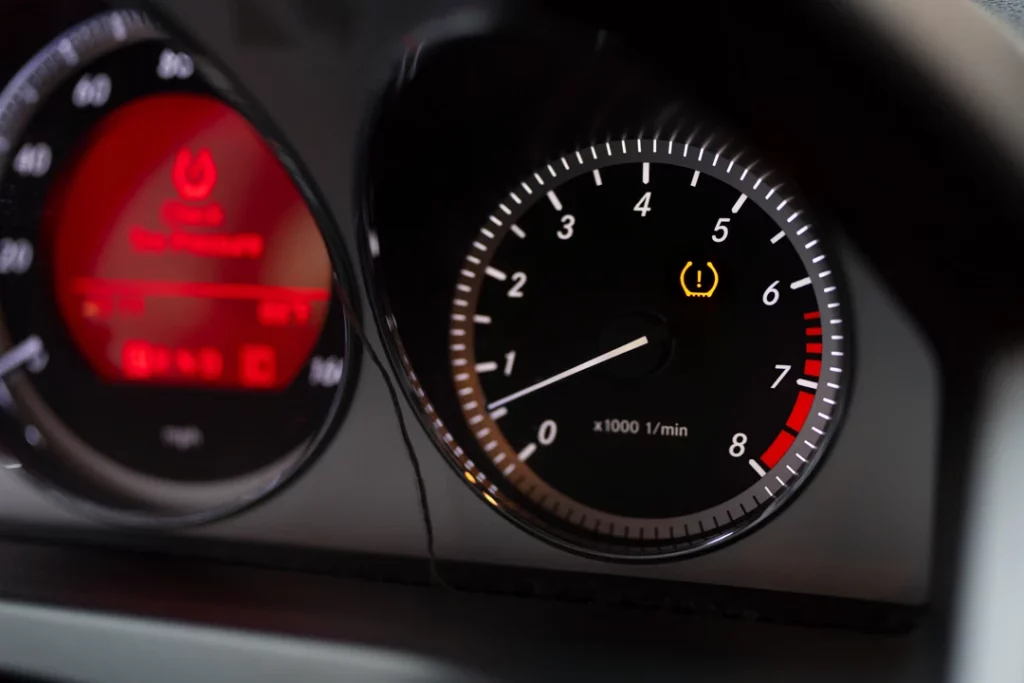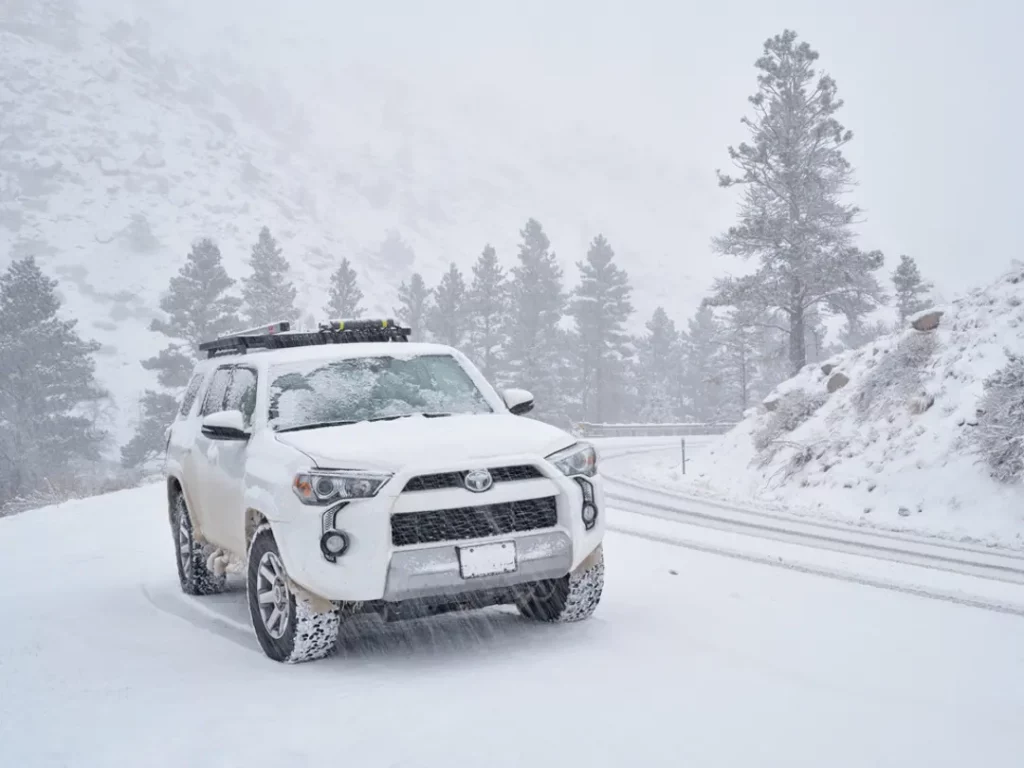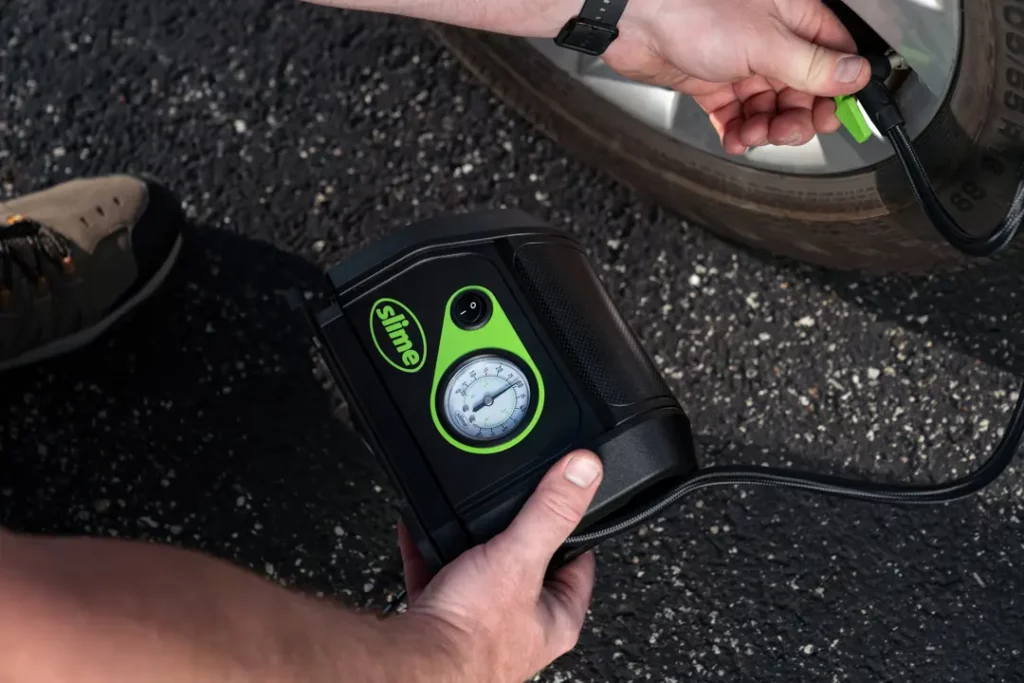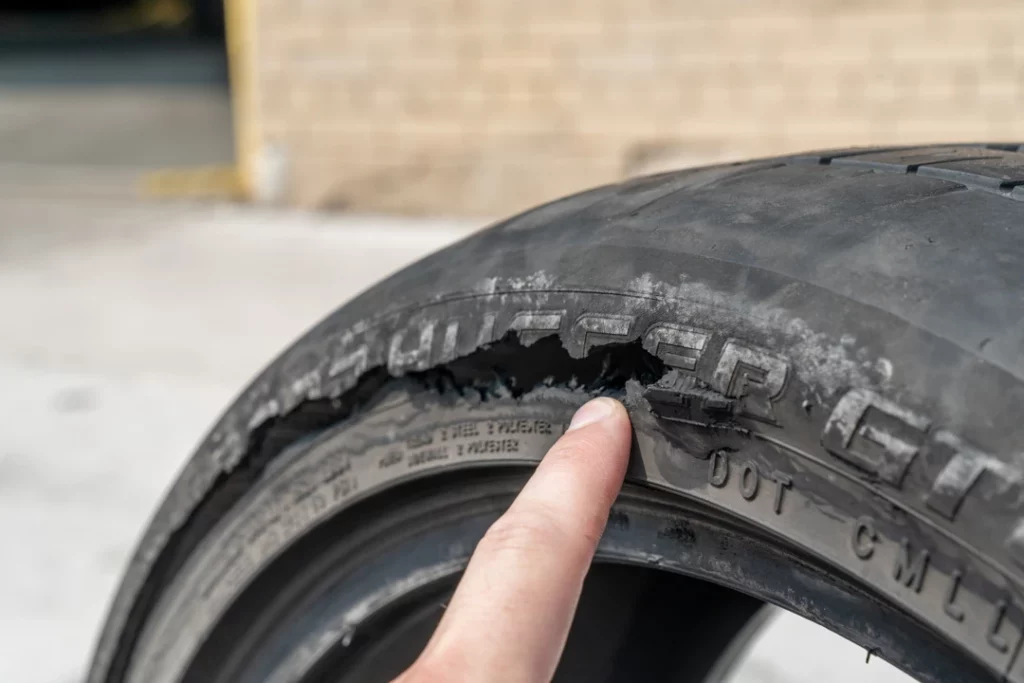Last Updated on 18.09.2024 by hrushetskyy

Most of us don’t think about our tires too often, but did you know that it’s not just punctures or worn-out tires that can change your tire pressure? One common culprit for changing air pressure in our tires is the weather and the ambient temperature around us. Tire pressure plays a crucial role in our safety and your vehicle’s performance, so it’s important to keep an eye on it, particularly when the seasons change. Learn more about the effect the weather has on your tire’s pressure.
The importance of tire pressures
Tire pressure, measured in pounds per square inch (PSI), is vital for several reasons. It makes sure our car sticks to the road with optimal traction, prevents poor fuel efficiency, and allows us to safely carry heavy loads. Properly inflated tires prevent issues like overheating and blowouts at high speeds while also improving your gas mileage. Both over-inflation and under-inflation can lead to uneven tire wear and affect your vehicle’s handling.
However, tire pressure is not a set-it-and-forget-it matter. It changes with the weather. Many drivers have noticed that their tire pressure warning light comes on during cold mornings or that their tires seem over-inflated on hot days. This is because air pressure fluctuates with temperature changes: for every 10 degrees Fahrenheit shift, tire pressure can change by about 1 PSI.
Understanding how weather affects tire pressure is key to maintaining your tires’ performance. So remember to check tire pressure regularly and adjust it as needed to keep you and your passengers safe and your vehicle running smoothly, whatever the weather.
Air pressure physics
Tire pressure significantly impacts your vehicle’s performance, fuel efficiency, and safety. When we talk about tire pressure, we’re referring to the force exerted by the air inside the tire on its internal walls, which is measured in pounds per square inch, more commonly known as PSI. This pressure influences the tire’s shape, stability, and interaction with the road.
To get a bit technical for a moment, the Ideal Gas Law is used to explain the relationship between air volume, temperature, and pressure within a tire. This fundamental principle in physics states that for a given amount of gas, the pressure (P), volume (V), and temperature (T) are related. As temperature increases, air molecules move faster, increasing pressure. And the opposite is also true. As the temperature goes down, the air becomes denser and moves more slowly, so the pressure drops.
For example, if you inflate your tires to 32 PSI on a warm day and the temperature drops significantly overnight, you’ll lose pressure, thanks to the cold weather. This is why it’s really important to check your tire pressure regularly so that it stays within the manufacturer’s recommended range.
How weather affects air pressure
Tire pressure in cold weather
When temperatures drop, so does tire pressure. Cold weather causes the air molecules inside the tires to contract, reducing pressure by about 1 PSI for every 10 degrees Fahrenheit drop in air temperature. This can leave your vehicle’s tires underinflated, worsening handling and increasing stopping distances. This is why it’s especially important to check tire pressure at the start of winter when the air temperature first drops.
When tires heat up
Warm temperatures cause the air inside tires to expand, increasing pressure. Too much air can lead to over-inflation, which reduces the contact area between the tire and the road. This can affect your car’s handling and braking, as your tires need the right traction and grip to hug the road correctly. It can also lead to uneven tire wear, especially in the center tread, which can lead to costly replacement tires. So during any hot weather spells, keep an eye on your tire pressure and adjust in line with the tire manufacturers’ recommendations.
Temperature swings

If you live somewhere with extreme temperatures, particularly areas where you have hot days and then a big temperature drop overnight, this can affect tire air pressure by a few PSI.
Significant overnight temperature drops can reduce tire pressure, while increased daytime temperatures can raise it. You might find that this affects your tire’s life and vehicle performance. In this case, we suggest setting your tire pressures at the time of day (and temperature) when you most frequently drive. If you drive both during the day and night, try setting the pressure when the temperature is between the usual maximum and minimum.
You’ll probably find that seasonal changes bring larger temperature swings, especially when you go from summer to winter. You might find that the cold air of winter triggers low-pressure warning lights if you have a modern car with a tire pressure monitoring system (TPMS). We recommend regular pressure checks at these times of year to make sure you’re safe and your car performs well.
How driving affects pressure
As well as a temperature drop or increase, certain driving habits can affect tire pressure. Long drives cause heat to build up from friction between your tires and the road, which can increase tire pressure. This heat buildup can reduce the tire’s contact patch, affecting handling and braking efficiency.
This is why it’s always important to take pressure readings when your car has been stationary for a few hours or has been driven for less than a couple of miles. This will make sure the tires reflect the ambient temperature, so you’ll get an accurate reading.
Practical tips for maintaining optimal tire pressure

One of the simplest and most important things you can do to remain safe on the road is to check your tire pressure regularly. Here’s a simple guide you can follow to check tire pressure:
- Buy a quality tire pressure gauge and keep it in your car.
- Make sure you know your vehicle’s recommended tire pressure. You’ll find it in the owner’s manual or on a small placard, usually inside the driver’s doorframe.
- Always check your pressure when the tires are cold. To do this, make sure your car has either driven less than a couple of miles or not been driven at all for at least three hours.
- Remove the valve cap and press the gauge firmly onto the valve stem to read the pressure.
- Repeat for all four tires. Remember to include the spare regularly, too.
- Compare your readings with recommended levels.
- Adjust your tire pressure if necessary.
To adjust your tire pressure:
- If the pressure is too high, release air by pressing the tire valve.
- If you have lower pressure than recommended, add air to the recommended level at a gas station or tire shop.
- Re-check the pressure with your gauge.
- Replace valve caps to keep your tires clean.
- If you have a TPMS, reset it if required, following the vehicle’s owner’s manual.
The risks of incorrect tire pressure

There are several reasons why it’s important you regularly check the pressure of your tires:
- Shorter tire life: Underinflated tires will wear out more quickly than normal on the edges, and overinflated tires will wear out more rapidly in the center.
- Compromised safety: Having incorrect pressure will make your car handle unpredictably, which can be dangerous.
- Risk of blowouts: Underinflated tires can build up heat more rapidly and flex more, which can lead to blowouts.
- Damage from road debris: Over-inflated tires are more likely to be damaged by dirt on the road, and potholes.
Frequently Asked Questions
Should I put air in my tires when it’s cold?
Yes, you should put air in your tires when it’s cold if your tires have low pressure! Cold weather causes the air in your tires to contract, which can lower the pressure and affect your vehicle’s handling, fuel efficiency, and tire wear. So remember to check your pressure regularly, ideally first thing in the morning before driving, especially when the seasons change.
How much does tire pressure fluctuate with weather?
Tire pressure can fluctuate quite a bit with the weather, changing about 1 PSI for every 10-degree Fahrenheit shift in temperature. When the weather cools down, the air in your tires contracts, causing a drop in pressure, while warmer weather makes the air expand, increasing the pressure. This means a 30-degree temperature swing can change your tire pressure by around 3 PSI, so checking and adjusting your tire pressure regularly is essential, especially during the change of seasons.
Can weather cause low tire pressure?
Yes, weather can cause low tire pressure! In cold weather, the air inside your tires contracts, leading to a decrease in pressure. This is why you might notice your tire pressure warning light comes on during the colder months or late at night if the air is cold. This means it’s important to check your tire pressure regularly, especially when there’s a significant change in temperature.
Will my tire pressure go up when it warms up?
Yes, your tire pressure will go up when it warms up. As temperatures rise, gas expands, including the air inside your tires, causing an increase in pressure. This is why you might see higher tire pressure readings during the hotter parts of the day or in hot weather. So, it’s important to check your tire air pressure regularly, especially during significant temperature changes.
Share the Knowledge
